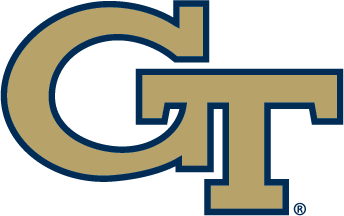Sept. 19, 2011
By Matt Winkeljohn
Sting Daily
I haven’t jumped the rails in a while. Please indulge me as a merger of developments has pushed me off track and in between worlds.
You’ll enjoy this, guaranteed.
Key ingredients: my father told me a fascinating story Sunday about working his tail off as a kid when he was a bowling alley pinsetter, and a Georgia Tech uber-fan sent a link to a similarly compelling podcast of Kansas defensive coordinator Vic Shealy. Saturday in Bobby Dodd Stadium, Shealy’s workplace was a bit like my father’s when he did all that crouching, scrambling, chucking, switching and jumping. The KU DC’s Jayhawks were plucked bald and Shealy was left holding an empty bag.
Back in the day, which in Dad’s case was the mid-1950s, the mechanisms that re-set bowling pins were not as spiffy as now. They were human.
Once a ball came crashing through, dad had to hustle up the pins, drop them in a rack, load the ball into some sort of return device, and then repeat once the second ball of the frame came hurtling through.
Then, he’d throw some sort of switch and the pins would settle into place. This may not be a perfect re-telling, but you get the picture.
Dad said that if side-by-side lanes were in use, the pinsetter would have to jump back-and-forth for double duty. If a co-worker didn’t show up, the night might run parallel with something in a Stephen King novel.
“League night was a bear,” said Dad, who at the end of those evenings found himself worn out, physically and mentally gassed.
Saturday was Shealy’s league night without the beer. He was alone at work.
As the Yellow Jackets torched the Jayhawks 66-24 while blowing up school record books in the process, Shealy flat out couldn’t keep up. He tripped and fell amid the pins while balls kept rolling right into his head.
“I’ve been . . . where I’ve seen that done to other people,” Shealy said. “As a defensive coach, you look down at those defensive coaches and say, `Man, I would not want to be where they’re at,’ because it’s a bad position to be against that offense when you can’t adjust out of it. It just snowballs on you.”
If only it were snowballs rather than bowling balls.
Moving beyond problems that his players had tracking and tackling the quicker Jackets, the KU defensive coordinator who came upon his job when predecessor Carl Torbush retired suddenly in early June . . . was lost, still in Kansas perhaps. He joined the KU staff last year as cornerbacks coach so he was familiar with the scheme the Jayhawks deployed in beating Tech 28-25. Shealy has spent more than two decades in coaching, including a stint as head coach at Asuza-Pacific from 1995-’98, so he’s anything but a newbie.
Yet he made a fundamental mistake in assembling his game plan for this year’s Tech contest. He looked chiefly at the final score of last year’s game, took it to be indicative of some grand plan, and apparently didn’t read between the lines.
The Jackets were their own worst enemy that day, doing more to slow themselves than did the Jayhawks. Plus, Tech head coach Paul Johnson and his staff were not about to ride the same game plan into this rematch.
Tech on Saturday unveiled some new or rarely-used plays, changing some tendencies and blocking patterns. The Jackets in revised themselves.
After they blow-torched their way to a school-record 768 yards by averaging an NCAA-record 12.1 yards per carry while rushing for a school-record 604 yards and scoring on runs of 95 and 63 yards and a pass play of 67 yards, Shealy took the yoke of frazzled and failed pinsetter.
“Our plan wasn’t much different, and that might be the downfall of what we did because we got schemed,” he said in a podcast on the KU athletics website.
Shealy said that he’d simplified some parts of the old game plan because he didn’t feel his current players grasped or fit all concepts, but in general, the pinsetter said, “We felt like the kids made enough plays [last year] to compete [this year].” It didn’t take long for Shealy to see that he was being hoodwinked.
On Tech’s first play from scrimmage, Orwin Smith raced a school-record 95 yards for a touchdown. It was a counter play unfamiliar to the Jayhawks.
Johnson said after the game that Kansas defenders last year tilted hard toward the Jackets’ motion man. Tech coaches took this into account, and dusted off older stuff or invented new. The head coach said his offense frequently out-numbered Kansas defenders.
There would be no argument during or after the game from Shealy, who said, “We got pidgeon-holed, and put in a position where we saw a couple [foreign] components . . . [one to] seal off the end and linebacker and force the ball on the perimeter where we’re a man short [defensively].
“After one or two plays we realized that we were in a position where to change was going to open up a Pandora’s Box for problems. We made some adjustments, and the play-action pass mushroomed on us off of that.”
Tevin Washington attempted but seven passes, and completed a mere four.
Those play-action balls exploded pins, going for 164 yards including a 67-yard touchdown to Smith and a 52-yarder to Roddy Jones.
Recognizing this persnickety set of problems turned out to be quite different for Shealy and his staff than doing much about it.
“[Tech’s] offense by nature is so difficult because your players are not used to playing it, and consequently we’re not used to adjusting in it,” the KU DC said. “As you begin to affect one part you affect another one.
“When you go too radical . . . we ran stuff all over the moon today. When we went radical, it opened up some play-actions that weren’t our players’ fault. Ultimately, whenever your plan gets schemed, it comes back to me. What happened [Saturday] is on Vic Shealy, and I take responsibility for it.”
The nightmare kept repeating itself. The balls kept coming. The pins kept blowing up as the Jackets’ wrinkles went largely un-countered. Film study didn’t help.
“The crux of it is we didn’t see [Tech’s adaptations] last year,” Shealy. “That [new material] had not been something even going back to [Johnson’s] Navy days that he did much. Some of the veer option schemes we did a pretty nice job on. It’s just that they only ran about two all day.
“Those [new] components are really completely counter to how we planned. That offense keeps un-coiling options.”
The agony would finally end.
Dad went to Purdue undergrad and Ohio State for his master’s. Doug Winkeljohn is now a retired aeronautical engineer. No word on whether his nightmares feature bowling pins and balls.
Shealy’s still working, and taking solace of another sort.
“Fortunately,” he said, “Army, Air Force and Navy are not on the schedule the next few years.”
I don’t think Kansas is going to schedule Georgia Southern any time soon, either, but the fast-paced, no-huddle offense of Louisiana Tech coach Sonny Dykes and offensive coordinator Tony Franklin is on the 2013 schedule – if all coaches are in the same places. Speaking of staying put, perhaps if rumors of Kansas joining the ACC come true, pins will fly at the Jayhawks again soon. Bet Shealy’s opposed. Whadya think? Comments to stingdaily@gmail.com.









